Hunting Beach, SC
Minnehaha Falls, GA
So today I drove a total of about 8-9 hours, hiked >10 miles with about a 35lb ruck, got rain dumped on me and my gear, and plenty of time, effort, and hassle with the film to try for a single decent picture of a single waterfall. Because goodness knows the world is running short of waterfall shots. LOL. Out of 10 frames, 9 were defective in some way. This one wasn't.
Flight of the Wista
So Amanda seems convinced that her left side is her "better" side, but she doesn't seem to realize I love *all* of her many sides.
This is my first go with the big camera in a year or two and even longer for doing my own devleoping, and I like how it came out.
Technical Nerdery: Window light with reflector fill. Wista 4x5, Nikkor 210mm @5.6, slight tilt to the side to keep both eyes sharp wide open, HP5+ film rated at 400 developed in DD-X 4+1. Scanned on my new Epson V800. Just spot correction and some faint dodging and burning in post.
David the Graduate
Dr. K
Hasselblad, Ilford FP4+
Jason
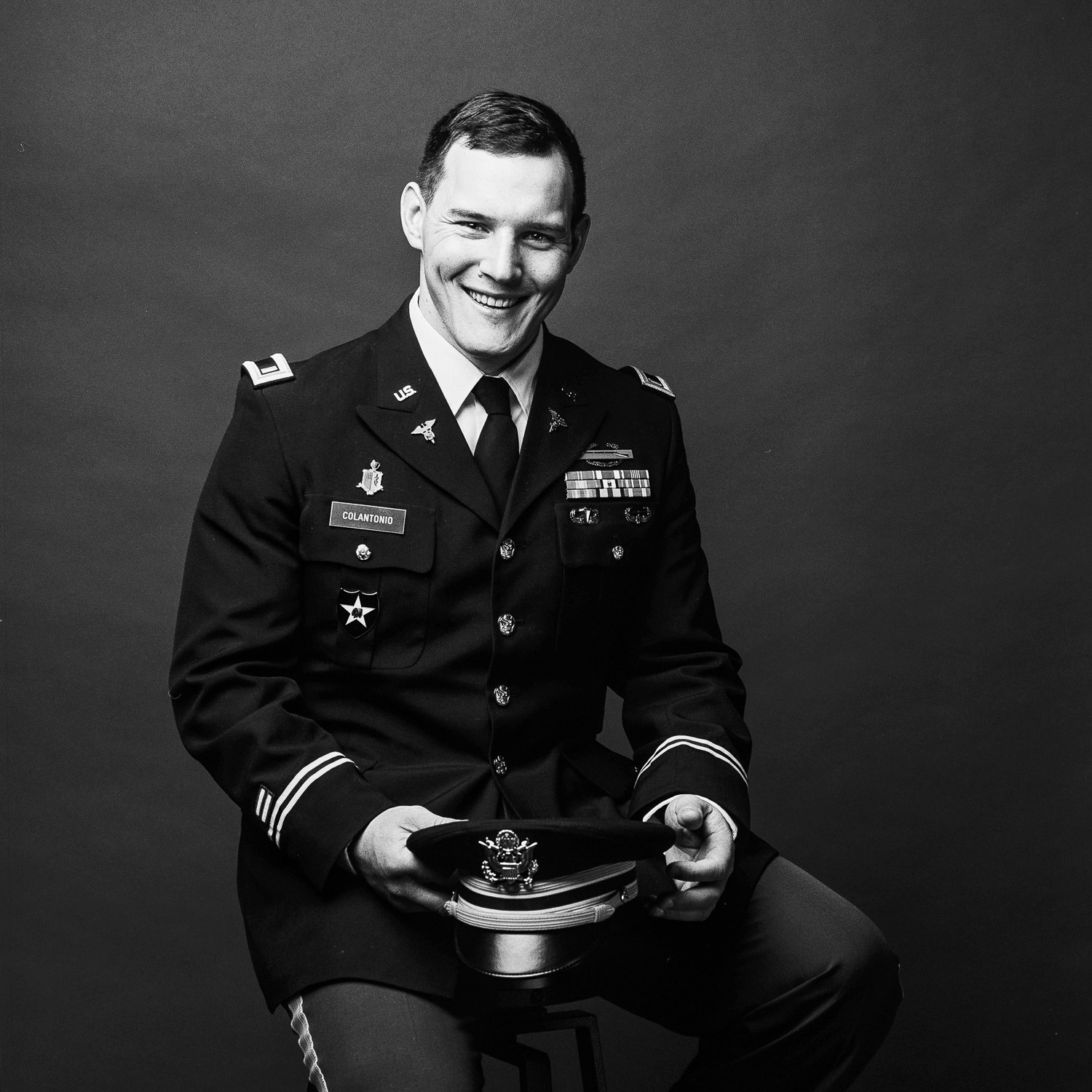

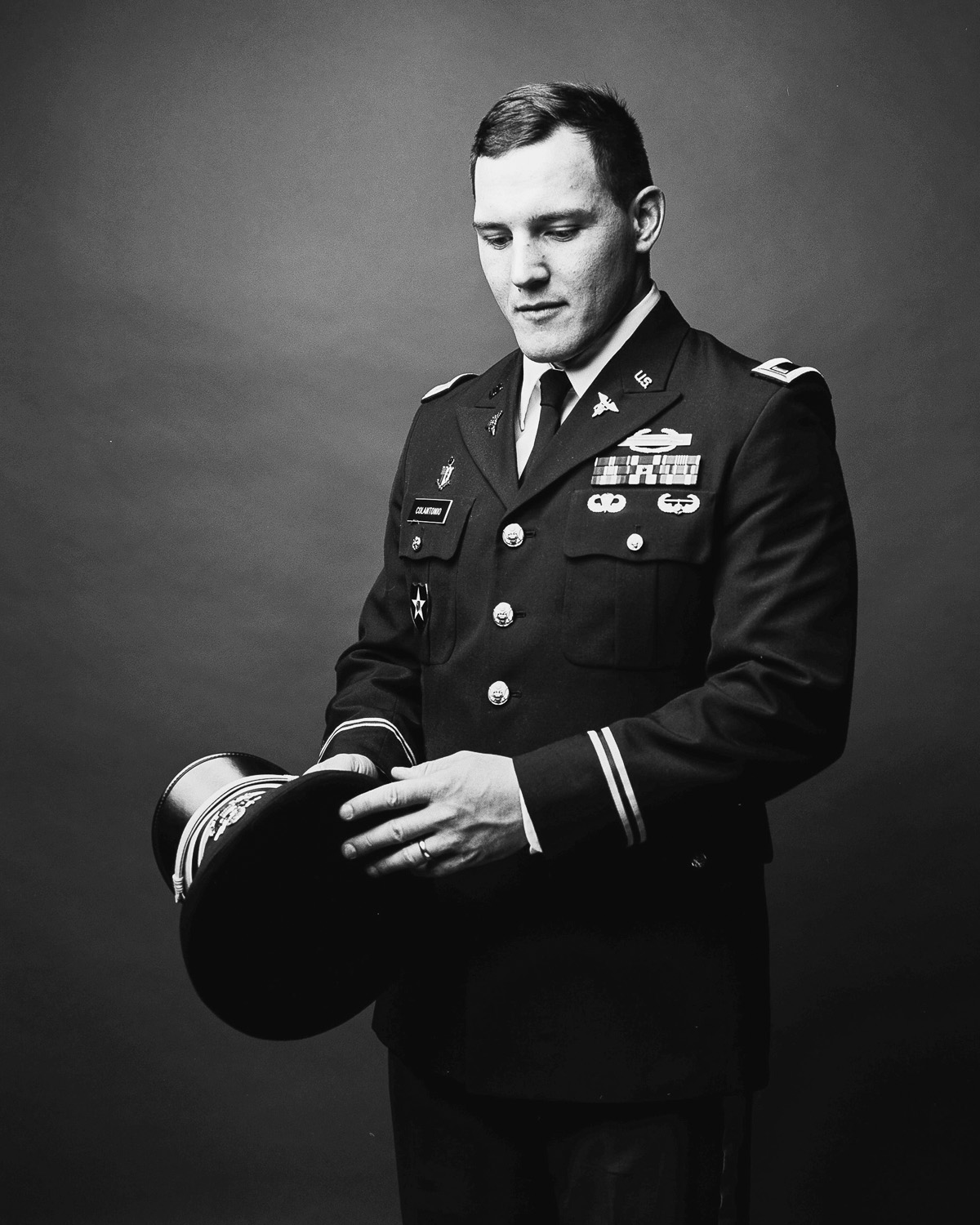
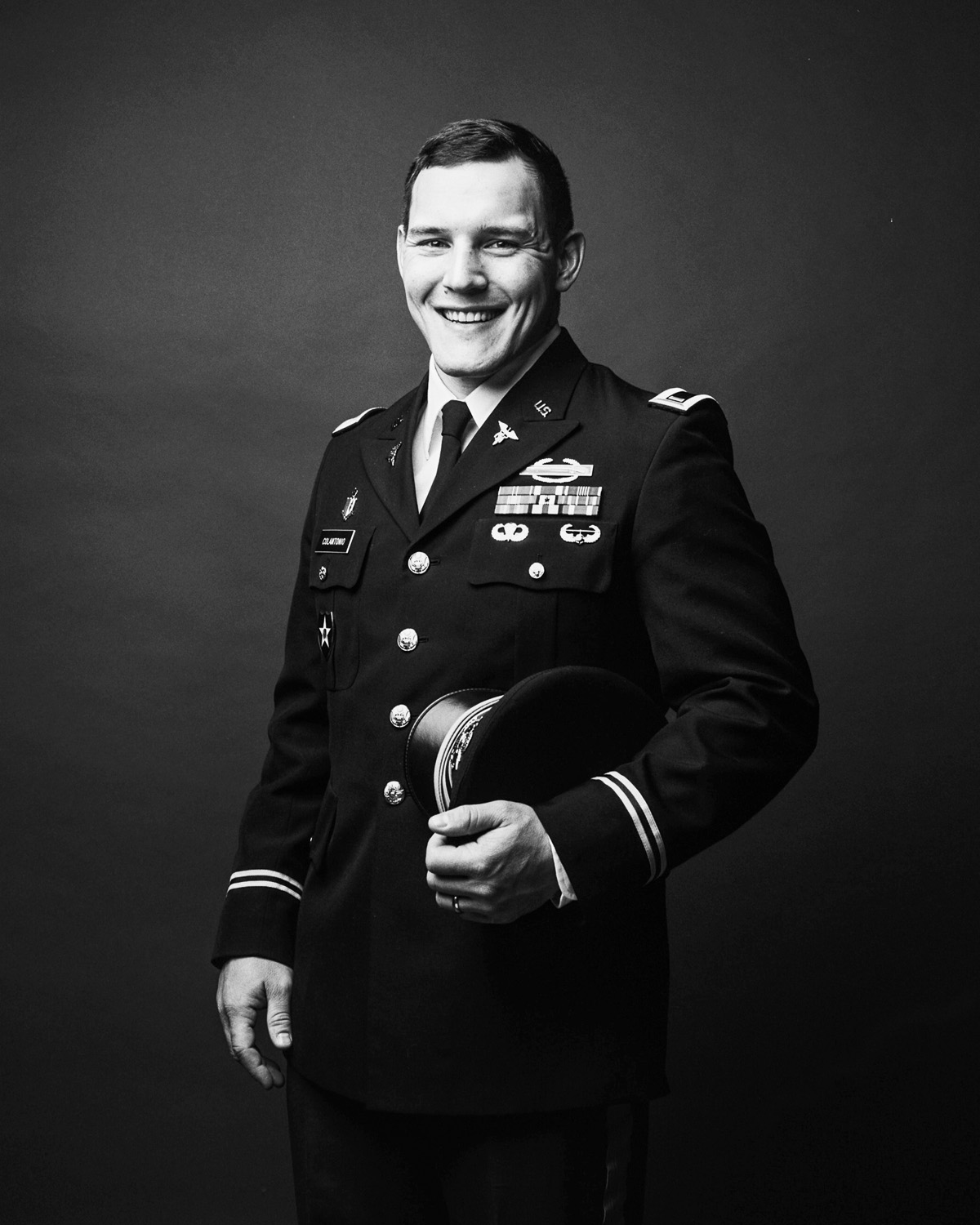
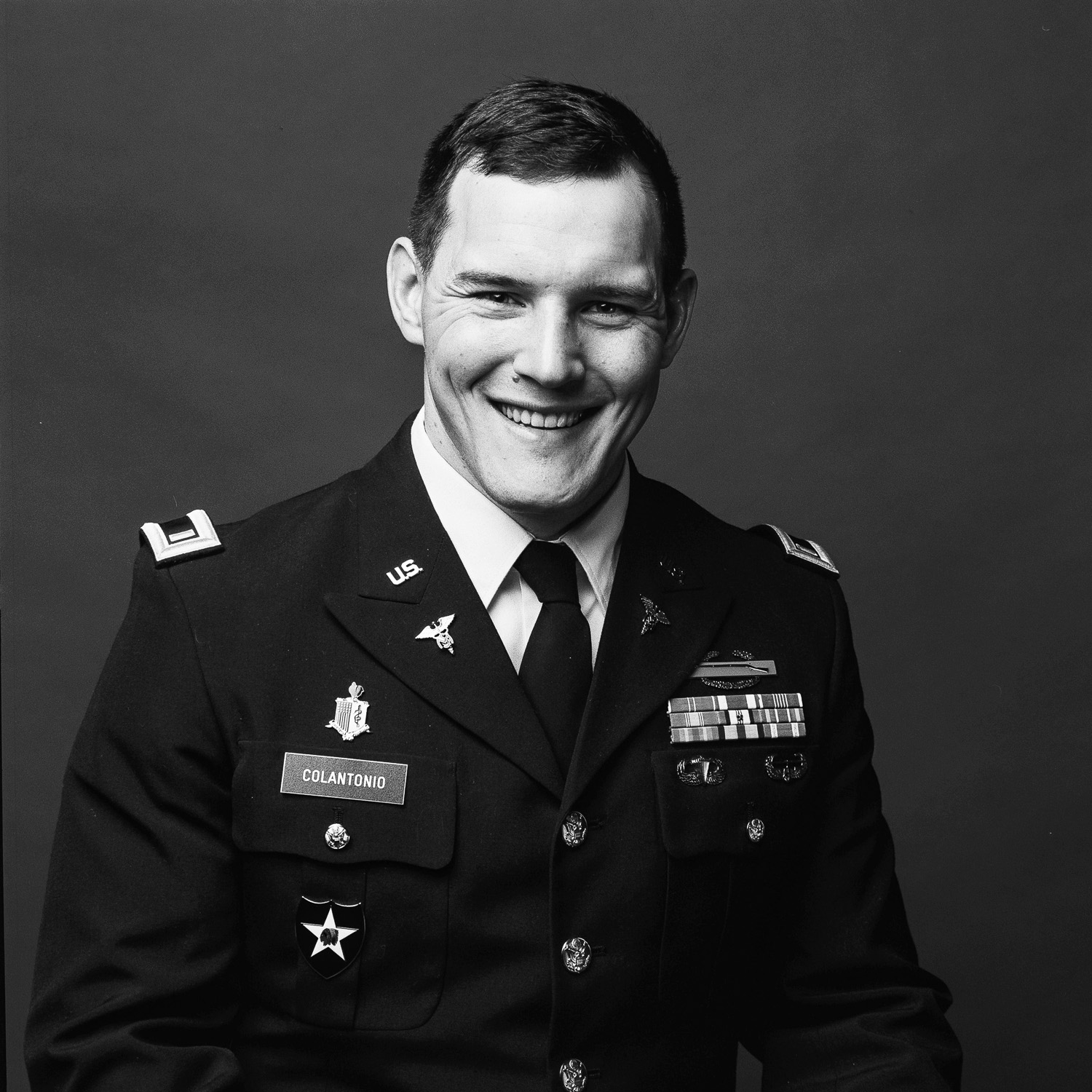
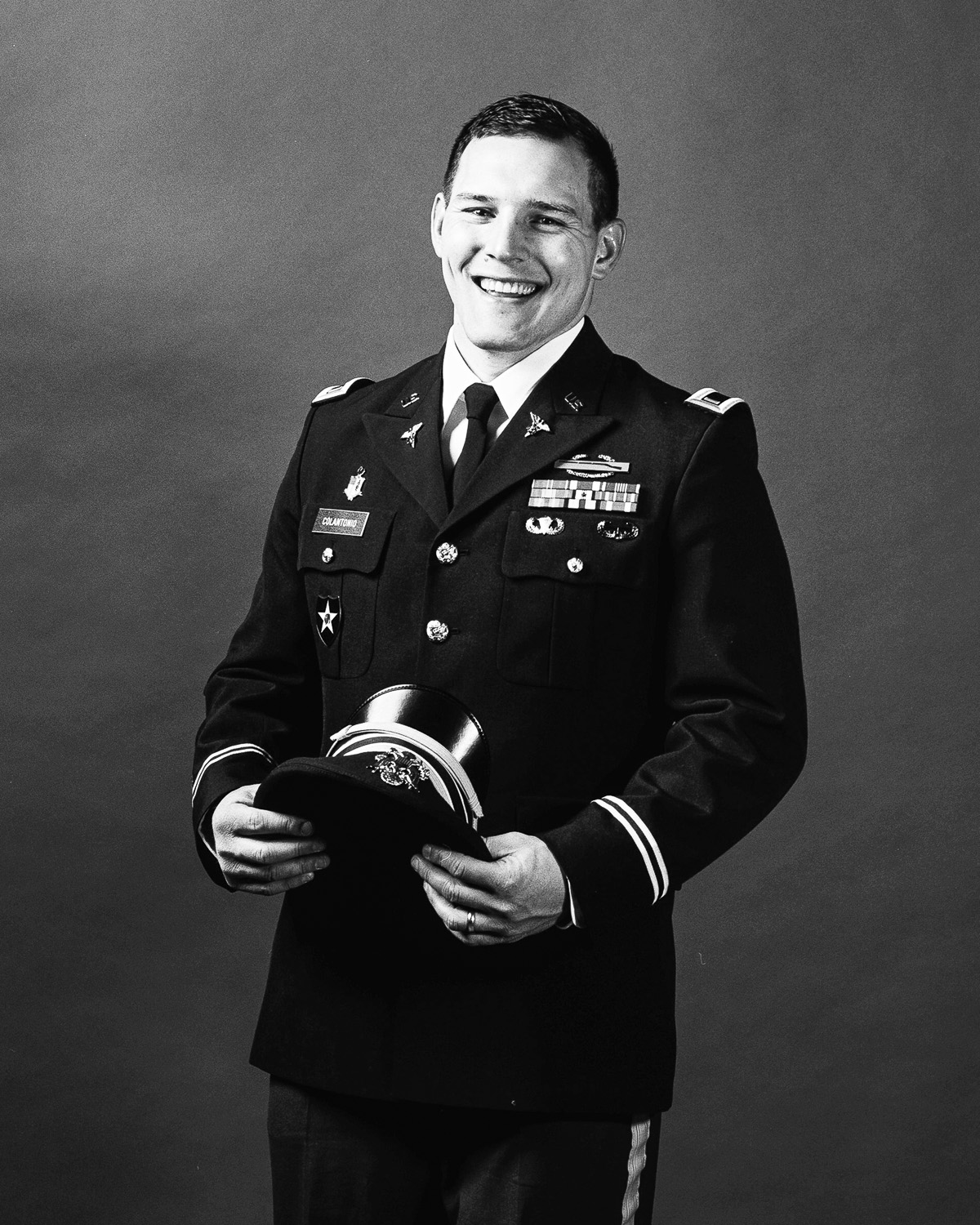
Trey
As I've explained in the past, my goal for these is to walk a line where I'm respecting the uniform and having some sense of decorum, but reflecting the subjects' personalities more than typical "I'm a tough guy" military portraits. Promoting a relaxed environment for a subject in a dress uniform can be a challenge, and I work very hard at modulating the conversation and environment to oscillate between "too loose" and "too formal."
All shots on my Hasselblad, using either FP4+ or Portra 160.
Impossible
A kind relative sent me an SX-70 camera some time ago, hoping that I could put it to some good use. Alas, the camera was not working, and it took me some time to find a repair person who was responsive. I finally found Chris Levitan, who rehabilitates Polaroid cameras out in Oregon, and when checked out the old camera he discovered she had been dropped at one point, and now was good only for parts. However, he was kind enough to offer me parts credit toward the purchase of one of his reconditioned cameras, which arrived a few days ago. He does excellent work and I'd encourage you to contact him if you're in the market for a Polaroid camera.
For those of you that are unaware, after the demise of Polaroid as an instant film company, a plucky start up venture purchased some of the factory equipment and re-engineered functional "Polaroid" instant film. Alas, its somewhat pricey, and they continue to iron out some kinks in the complex alchemy that makes these prints work, but it is an awful lot of fun and really nice work can be done using their stock. So far I've learned a number of ways to screw up with this kit (temperature, flare, exposure compensation, bad use of flash), but I think I'll be able to work through the learning curve. Ultimately, there is still a magic to shooting instant film, and I'm thrilled that it is available and continuing to improve.
Me, photographed by the Mrs.
The Mrs., photographed by Me
FP100C
There has been much weeping and gnashing of teeth in the analog photography community this week regarding the untimely demise of Fuji's FP100c pack film, the last instant film available for use with medium format cameras like my Hasselblad. I know for me that every time a product I use gets discontinued I not only feel the loss of that creative tool, but also question why I continue to go against the grain and pursue an art form that is becoming ever more anachronistic. I'm going to let my geek flag fly a moment and admit that at times like this I always think of this exchange between Gimli and Éomer in Tolkein's Return of the King:
"You have chosen the Evening, but my love is given to the Morning. And my heart forebodes that soon it will pass away for ever."
The Lord of the Rings books are suffused with a sense of melancholy for a world that is a shadow of its former self, and soon to fade away. Tolkien's writing and worldview were surely influenced by his service in the First World War, which profoundly traumatized his generation and in many ways represented the death of the world as his people knew it. However, this sentiment of love in the face of ephemerality is a universal human theme, and one revisited again and again in literature. This idea of loving a diminished and vanishing world mirrors how I often feel about analog photography.
Carbon. Mamiya RZ67, FP100c
At times like these I think it is worth remembering that it is our privilege to enjoy this art-form with the greater appreciation for its vulnerability and transience. When I use my Rolleiflex, I do so knowing that I am her steward and there will never be any more like her produced. The Cibachrome print on my wall is more special because I could never have another one made. I am grateful to pursue my art with these tools while they are still available, and when they are gone I am grateful that I experienced them. It is my hope that analog photography will always have a place in the visual arts, but it would be folly to expect it to become anything other than more niche, challenging, and limited in scope.
So I would exhort those in the analog community to be grateful for the experiences we have had with discontinued photographic tools and to enjoy those which are still available. Life is finite and fleeting, and we must enjoy the last of the morning before its gone.
Hasselblad 500c/m. Kodak Portra 400
Shandi
Product Review: Tap & Dye Rolleiflex Strap
A Rolleiflex is a beautifully crafted camera, and holding one is a tactile, almost visceral experience. I purchased this one last year, and ever since I did I'd been leery of the new-old-stock strap that came with her. While it was obviously unused, it was just as obviously dry and brittle, and not trustworthy for the task of carrying such a precious device. When I looked around, I struggled to find just the right strap for this lovely camera, but was uninspired by the ready-made options out there.
I'd been curious about Tap & Dye for a while, because I'm particularly partial to the Horween Chromexel leather that Justin uses on some of his straps. I also try to buy American handmade items wherever possible, and he makes his straps in Brooklyn, NY. When I didn't see a Rolleiflex strap listed on his site I reached out to him to see if he could make one, and sure enough he said it would be no problem. I commissioned a strap in Dark Olive Chromexel with red stitching (the latter at Amanda's request). The strap took about 4 weeks in production and arrived at my door nicely wrapped in a little canvas sack.
In a word, the strap is beautiful. The leather is soft and rich, and is already developing a lovely patina. The olive is really a brown with maybe a hint of greenish notes, and matches my Barbour jackets nicely. The width of the wider neck strap is perfect and comfortable over a long day's carry walking around Washington DC. All of the stitching appears carefully and skillfully executed. The clips work perfectly and appear new (sometimes procuring clips for Rolleiflex camera straps can be a challenge these days!). Justin was also communicative throughout the process, and very helpful. I really can't recommend Tap & Dye enough if you're looking for a quality camera strap.
All images shot by me using a Hasselblad 500c/m and Kodak Ektar 100 film.
A Quick Comparison: Delta 100 vs. HP5+
Intro
As much time as I've spent with different film emulsions and development, I'm always interested in head-to head comparisons of films in the real world. Its one thing to look at curves and other technical data, and its another to see how it plays out in practice. One has to be careful not to extrapolate too much about such film comparisons, as there are always a ton of variables, and I've done my best here to let you know what was and was not controlled. The other day I was finishing a roll of Delta 100 on my Rolleiflex at the Lincoln Memorial, and changed to a roll of HP5+. I shot nearly the exact same shot on each emulsion, compensating on the HP5+ with one stop smaller aperture and one stop faster shutter. Each shot was developed in D76 by Photovision at box speed.
So, here's what's constant:
- Rolleiflex 3.5F (recently serviced with accurate shutter)
- Scene
- Light Conditions
- Compensated Exposure
- Developer
- Lab Processing by Photovision
- Frontier Scanner
- All contrast, exposure, shadow, highlight, and sharpening settings in LR identical. No local adjustments have been made. I have opened up the shadows as much as possible in these both for aesthetic effect and to illustrate the details in the scans.
Here's what may not be perfectly constant:
- Appropriate development time for each film in this developer may be open to interpretation, and I did not personally witness the development.
- The scanner settings were adjusted by lab to appearance, but may not have been perfectly equal.
- I did straighten and slightly perspective correct as needed for aesthetic appeal. This is minor.
- As one would expect, there is more DOF in the HP5 shot since I closed the aperture a stop.
Conclusions:
As expected, the Delta 100 has finer grain and higher contrast. I was a little surprised though just how much the lower contrast in HP5 allowed for detail in both the shadows and highlights. Notice the preserved detail in all but the darkest parts of the shadows in the HP5+ image, and also the preserved details in Mr. Lincoln.
So in my view both are fantastic films that each have their place, but I think this illustrates nicely that HP5+ does an excellent job of handling contrasty scenes in addition to being two stops faster, and that's worth factoring in when one is selecting which film to load. Of course on can control contrast in development to an extent, but all other things being equal, HP5+ will probably always be able to retain more dynamic range.
Images (click for larger version)
Ilford Delta 100
Ilford HP5+
Charlie 2
Charlie
Ethan
Rolleiflex 3.5F, Ilford Delta 100
Lincoln
Hasselblad 500c/m, Ilford FP4+
Omi
Omi is a USAF Officer, she will soon be a physician, and she's a brilliant poet collaborating with me on my book project. I hope I've done her justice here.
Blind Spots
While this attitude was probably an asset in keeping me receptive to critical feedback and helping me to identify areas for improvement, over the years I’ve begun to recognize that distrust in my own vision can be as severe a handicap as a blindspot for my own flaws. I have reached points in my efforts at photography where I have been consciously attempting to create images where nothing was wrong with them....
Read MoreProduct Review: ClearSight USA Hasselblad to Arca Foot Adapter
Today I want to take a moment and give a quick shout out to one of my favorite camera mods that is tucked away in a hidden corner of the internet: the ClearSight USA Hasselblad to Arca Foot Adapter.
Some of you may not be aware that your 500 series Hasselblad camera actually has a built-in quick release on the bottom. The problem is that its specific to Hasselblad, and few people still use the quick releases made for that plate. What most people wind up doing is putting a removable plate on top of the Hasselblad QR plate, which winds up being both uncomfortable in the hands and adding bulk to the camera.
After scouring the internet, I found this company manufacturing a replacement for the stock plate. Its not really any more bulky than the stock plate, its smooth and comfortable to hold, and it works perfectly with my RRS BH40. Its an elegant, comfortable solution to a minor but annoying problem. For whatever reason I never see anyone write about this product and its hidden on the website of a company that makes lens cleaning fluid, so folks are unlikely to find it. I haven't seen any of the other big plate manufacturers offer a stock replacement plate, as opposed to one that fits over the original.
The product itself is nicely made with comfortable smooth edges and good finish. The one pictured has been used for a year or two with no significant blemishes. All in all I recommend you consider this product if you're using a Hasselblad and use Arca-compatible tripod mounts such as the ones on Really Right Stuff, Markins, or Kirk ballheads.
Why Photography
While Minor White once said that “all photographs are self-portraits,” one could also argue that every viewer experiences every portrait as a mirror at least as much as a window....
Read More
























